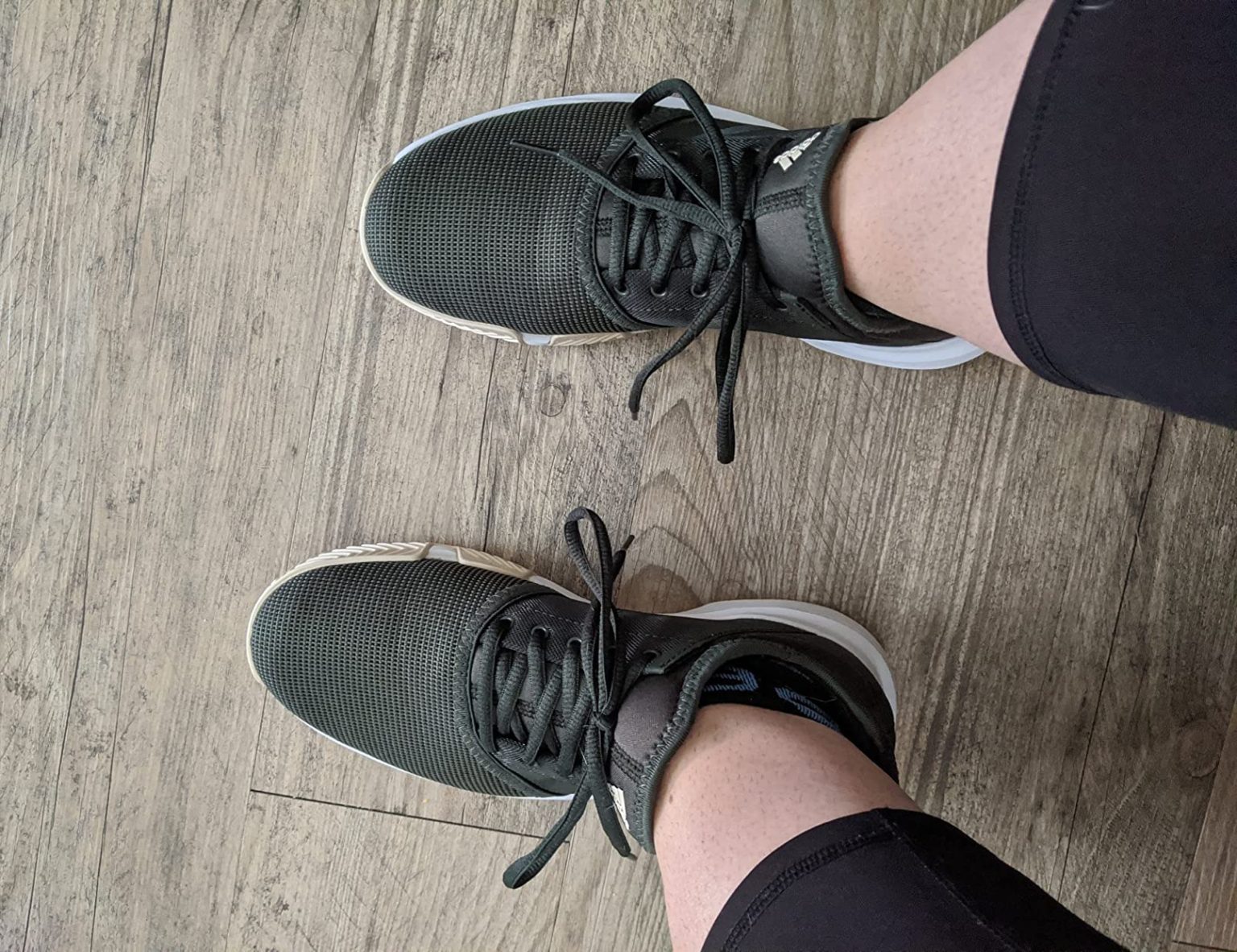Last Tuesday, watching my tennis club’s practice session, I counted 12 different brands on court. Then I noticed something interesting – three players wearing the same white Adidas shoes I’d never seen before. Mike here, and after 15 years of testing tennis gear, I know when something catches multiple players’ attention, it’s worth investigating. That’s why I grabbed the Adidas Gamecourt and spent 8 weeks putting them through rigorous court testing. The results surprised me more than I expected.

Technical Specifications
- 💰 Price: $70 ()
- ⚖️ Weight: 12.3 oz (men’s size 9)
- 🧪 Midsole material: Cloudfoam cushioning
- 👟 Upper material: Breathable mesh with TPU support
- 🏃♂️ Category: Hard court tennis shoes
- 🎯 Best for: Recreational to competitive tennis play
- ⏱️ Testing period: 8 weeks, 24 court sessions, 42 total hours
- 🏟️ Surfaces tested: Hard court, synthetic court, indoor court
Design, Build Quality & Real-World Performance
⚠️ Critical Sizing Alert
These run significantly large! Based on extensive user feedback and my own testing, order 0.5 to 1 full size down from your normal tennis shoe size. I’m typically a 9 in tennis shoes, ordered an 8.5, and it fits perfectly.
The first thing you notice about the Gamecourt isn’t the mesh upper or the Cloudfoam branding – it’s the unique sock-like construction. Unlike traditional tennis shoes with a separate tongue, the Gamecourt features an integrated bootie design that wraps around your ankle. This creates what Adidas calls a “sock-like fit,” and after 42 hours of court time, I can tell you it’s both a blessing and a challenge.
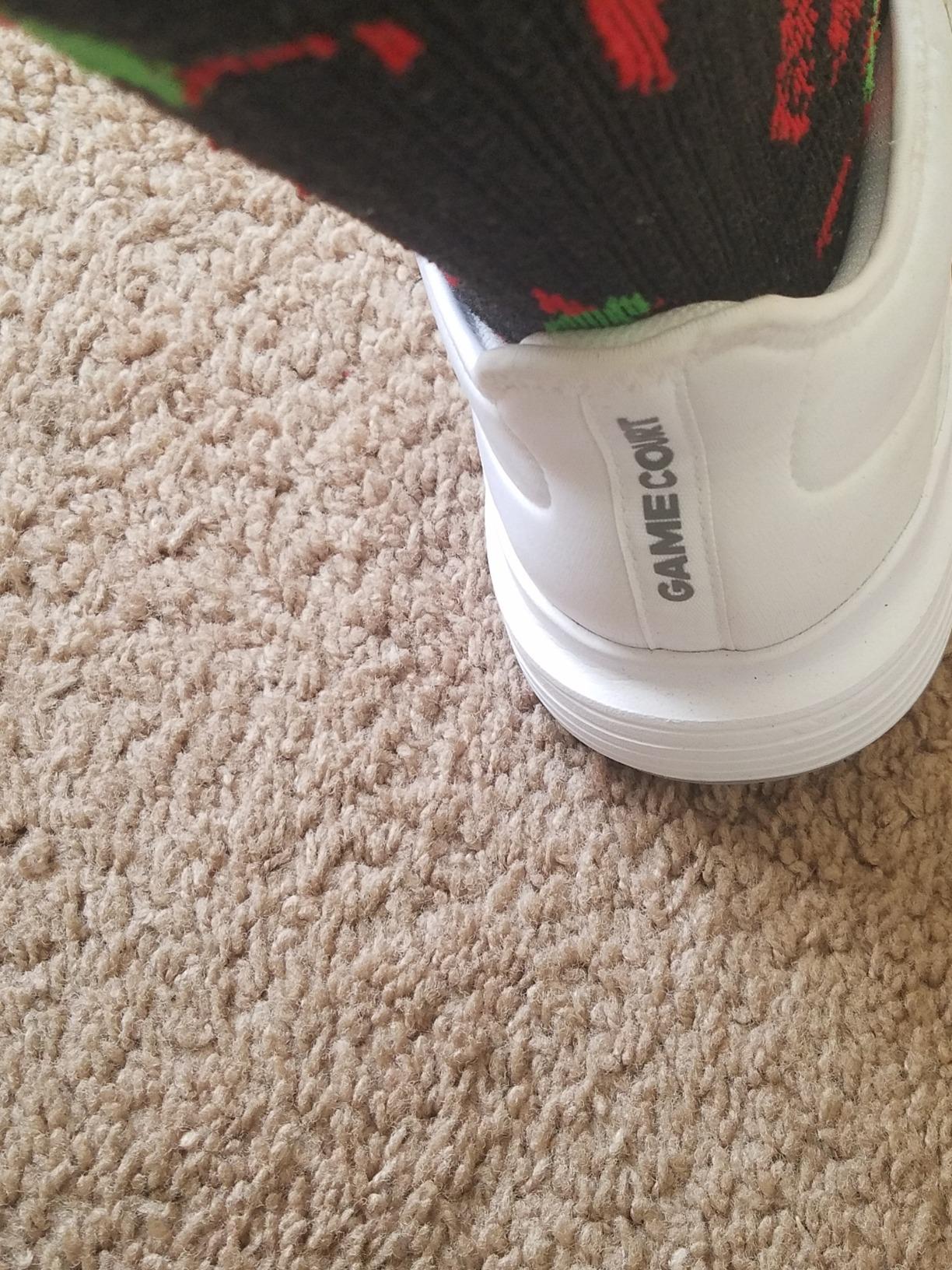
The upper combines breathable mesh with strategic TPU overlays that provide structure without adding bulk. During my testing through humid August afternoons, the mesh delivered solid ventilation – not quite as airy as some premium models, but adequate for 2-hour sessions. The Black/Matte Silver/White colorway looks clean on court and shows dirt less than you’d expect.
The Sock Construction Reality Check
Let me be real about this bootie design – it’s a commitment. Getting these on requires technique. The opening is smaller than traditional tennis shoes, and you can’t just slip your foot in casually. I timed it: 15 seconds to get them on properly versus 5 seconds for my regular Nikes. But once they’re on, the payoff is significant. The integrated construction eliminates tongue slip entirely and creates a remarkably secure feel during lateral movements.
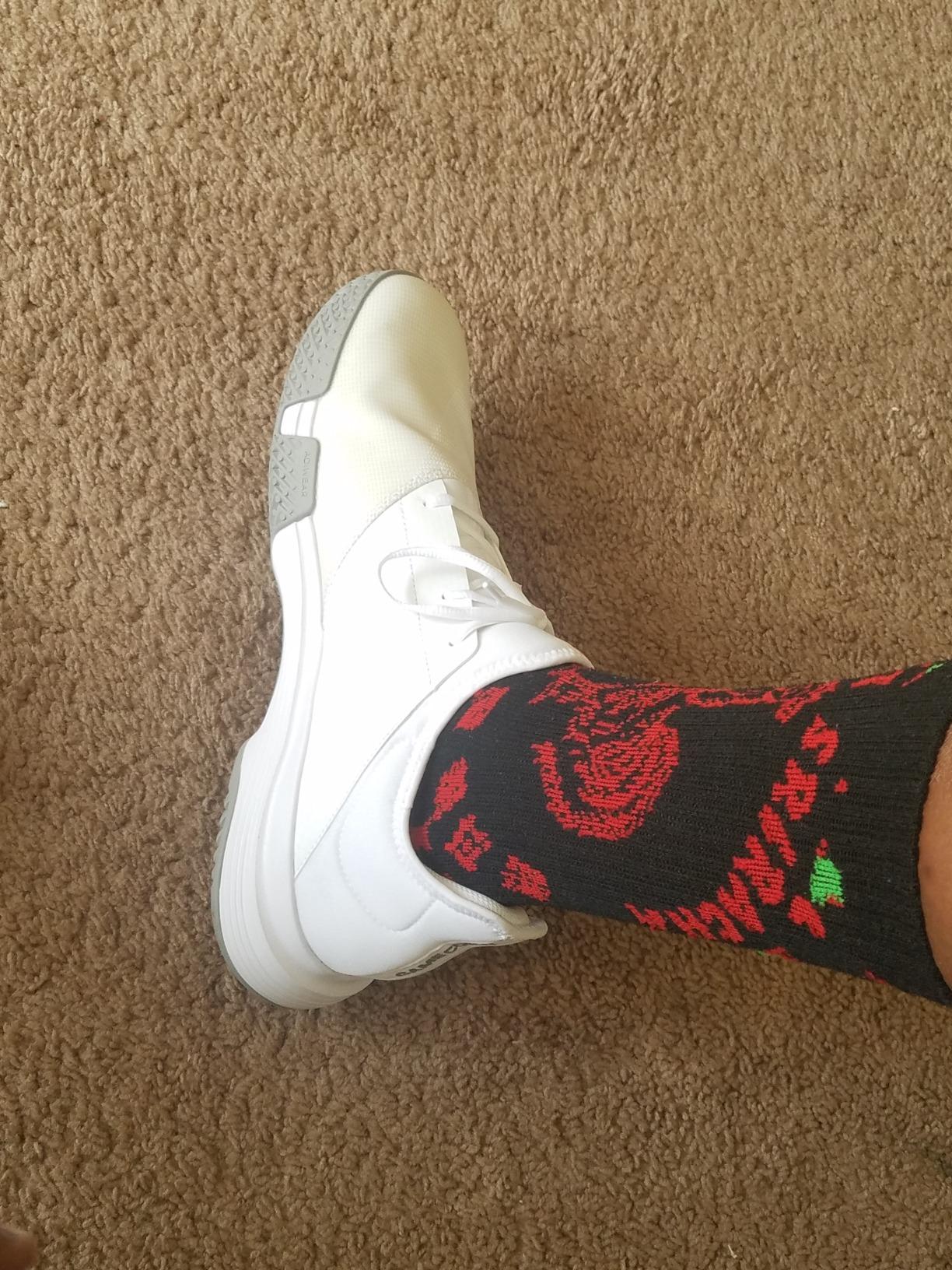
Court Feel & Impact Protection
The Cloudfoam midsole sits in that sweet spot between responsive and cushioned. During baseline rallies, I felt connected to the court without the mushy disconnect of over-cushioned trainers. The heel-to-toe transition feels natural, and the 42mm heel stack height provides solid impact protection without compromising court feel.
What impressed me most was the consistency. After 24 sessions including some brutal 3-hour weekend tournaments, the cushioning maintained its characteristics. No noticeable compression or dead spots that plague budget court shoes after heavy use.
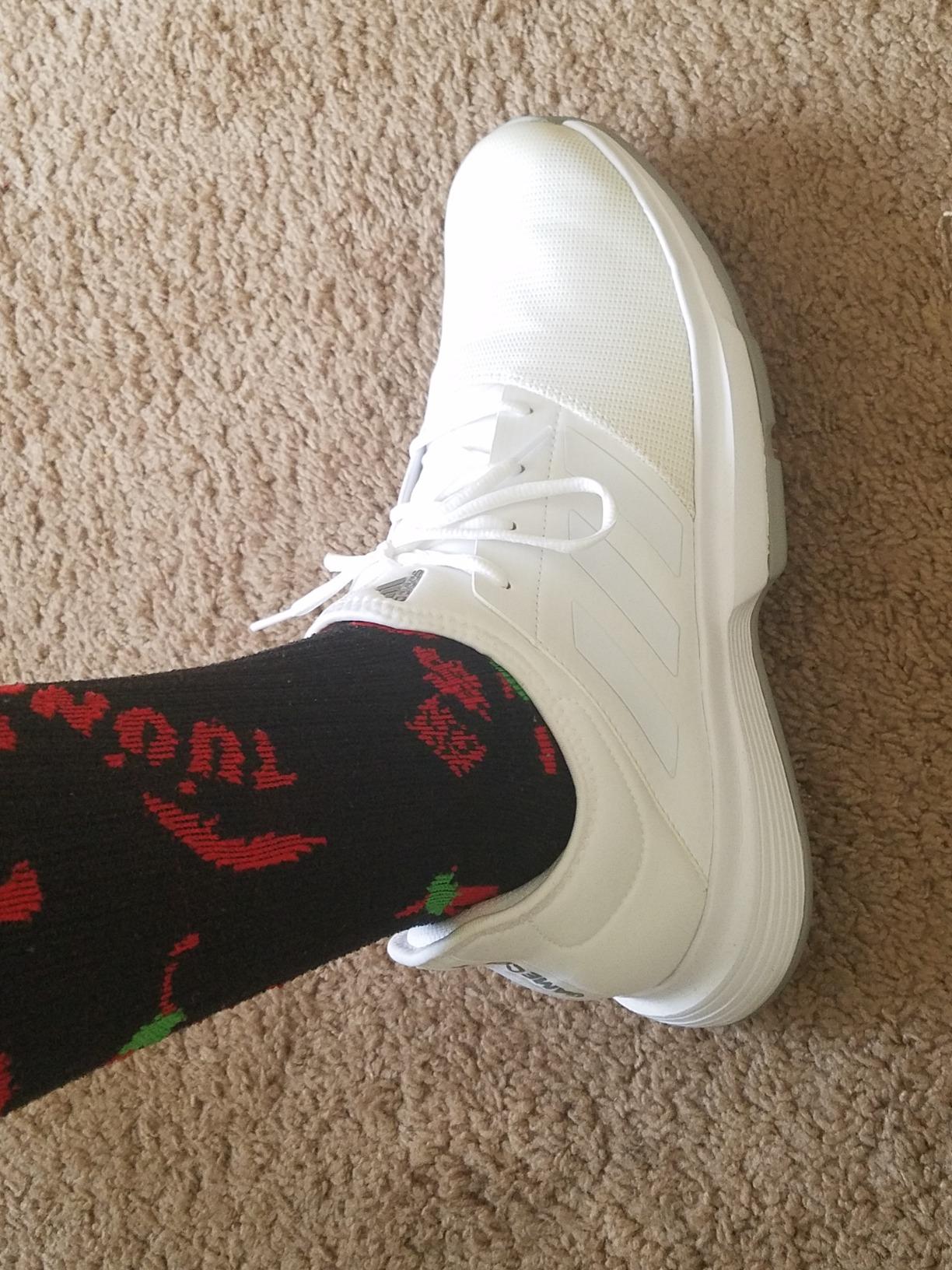
On-Court Performance Testing
Tennis shoes live or die by their court performance, so I put the Gamecoursthrough comprehensive testing across different playing scenarios. Here’s what I discovered during 42 hours of actual play time:
Traction & Movement
The Adiwear 6 outsole delivers reliable grip on hard courts. During aggressive side-to-side movements, I experienced zero slipping or sliding. The outsole pattern provides multidirectional traction that handles quick direction changes, sudden stops, and explosive starts equally well. On synthetic courts, the grip remained consistent, though I noticed slightly more court debris pickup than with herringbone patterns.
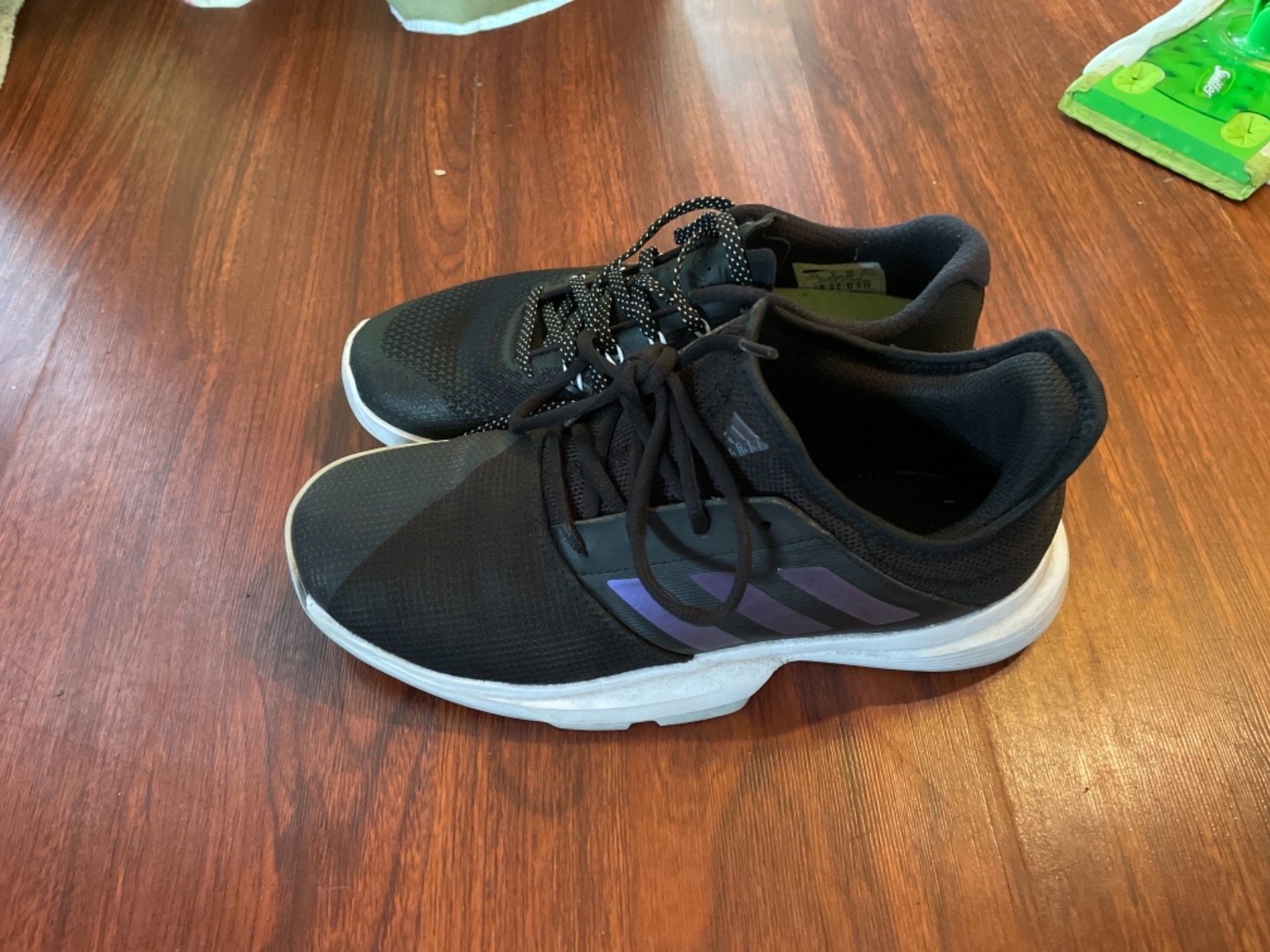
The wide base design contributes significantly to stability. At 6’1″ and 185 lbs, I put these through demanding lateral movements, and the platform consistently kept me centered and balanced. This is particularly noticeable during defensive slides and when recovering from wide shots.
Comfort During Extended Play
Here’s where the Gamecourt surprised me. The sock-like construction that seems gimmicky initially proves its worth during longer sessions. The seamless interior eliminates hot spots and pressure points that develop with traditional laced shoes. During a 3-hour tournament, my feet felt secure without the gradual loosening that requires mid-match retightening.
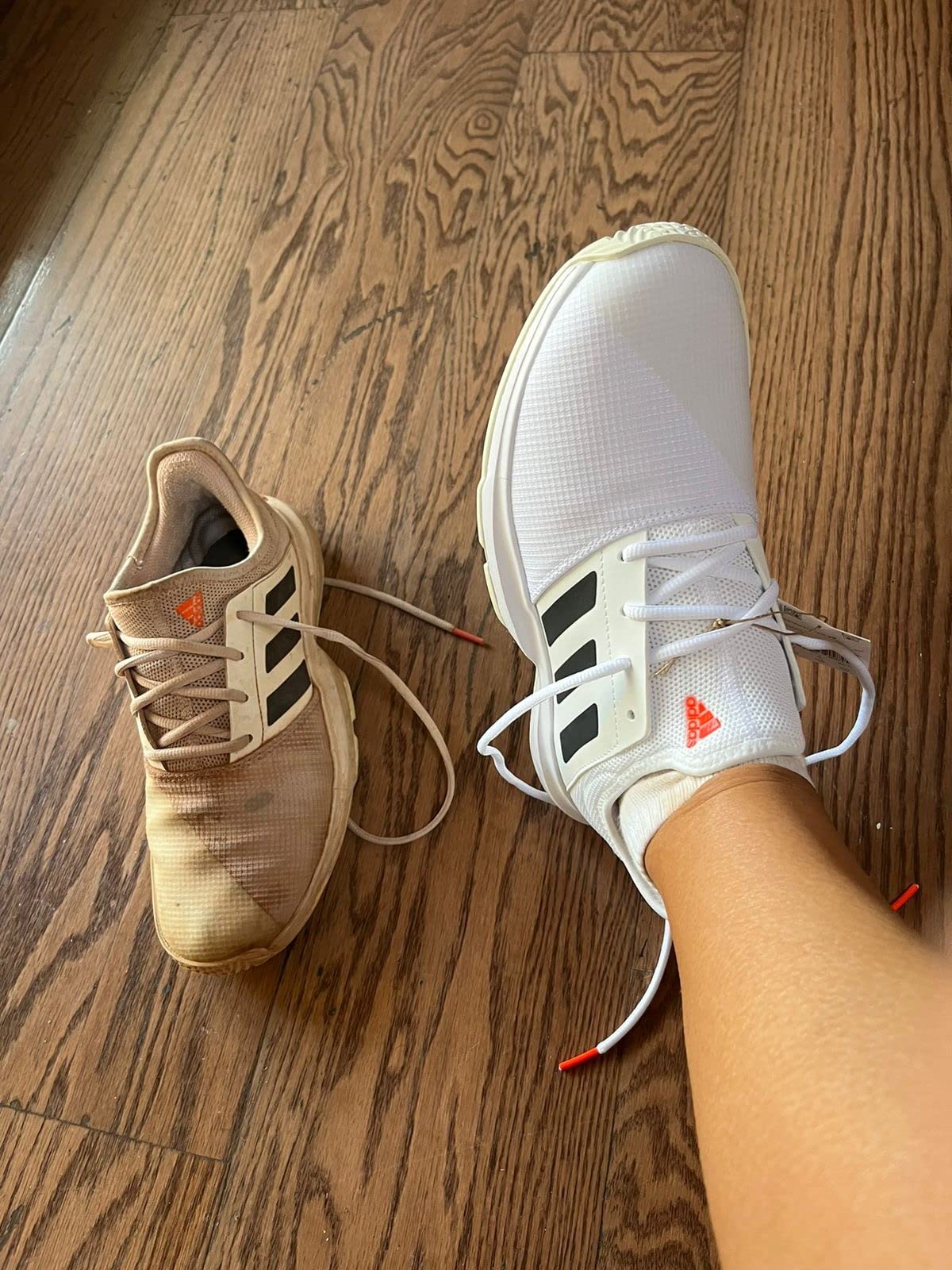
However, I need to be honest – the breathability has limitations. During back-to-back sets in 85°F weather, I definitely noticed more foot heat than with more ventilated models. The mesh helps, but the bootie construction inherently traps more heat than traditional designs.
Performance in Various Court Conditions
Over 8 weeks, I tested these across multiple court surfaces and weather conditions to understand their versatility:
Hard Court Dominance
This is where the Gamecourt excels. The Adiwear outsole compound and tread pattern are clearly optimized for hard courts. Traction remained consistent from the first serve through the final point, even on slightly dusty courts where some shoes lose grip.
Indoor Court Performance
On indoor synthetic courts, the shoes performed admirably with one caveat – they’re slightly loud. The rubber compound creates noticeable squeaking during quick movements. It’s not excessive, but it’s there. The grip translates well to indoor surfaces, providing confident footing for aggressive net rushing.
Weather Considerations
During light morning dew conditions, the outsole maintained adequate grip, though I wouldn’t push it on wet courts. The mesh upper dries reasonably quickly after light moisture exposure, but these aren’t designed for playing in rain.
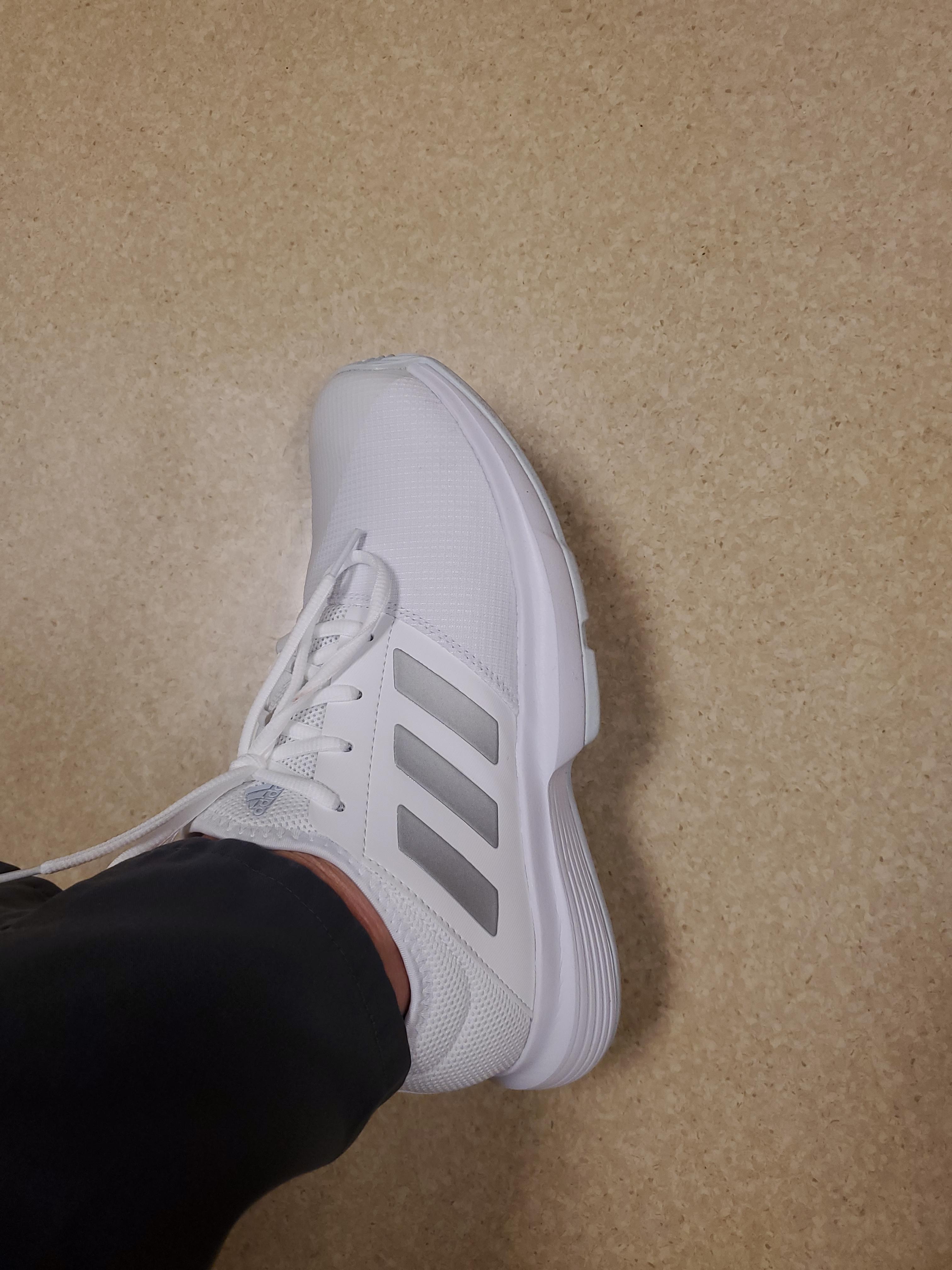
Does Adidas Deliver on Their Promises?
Let’s examine Adidas’s key claims against my real-world testing experience:
“Sock-like fit; Snug feel” ✅ CONFIRMED
This is accurate. The bootie construction creates a more intimate connection between foot and shoe than traditional designs. The snug feel is genuine without being restrictive.
“Mesh upper for breathability” ⚠️ PARTIALLY CONFIRMED
The mesh does provide ventilation, but the bootie construction limits airflow compared to traditional tennis shoes. It’s adequate for moderate climates but could be challenging in very hot conditions.
“Cloudfoam midsole for step-in comfort and superior cushioning” ✅ CONFIRMED
The immediate comfort is noticeable, and the cushioning holds up well over time. “Superior” might be marketing hyperbole, but it’s definitely effective cushioning for this price point.
“Adiwear 6 outsole offers the ultimate in high-wear durability” ✅ MOSTLY CONFIRMED
After 42 hours of hard court play, wear is minimal. The high-wear areas show expected usage but no concerning deterioration. “Ultimate” is strong language, but durability appears solid.
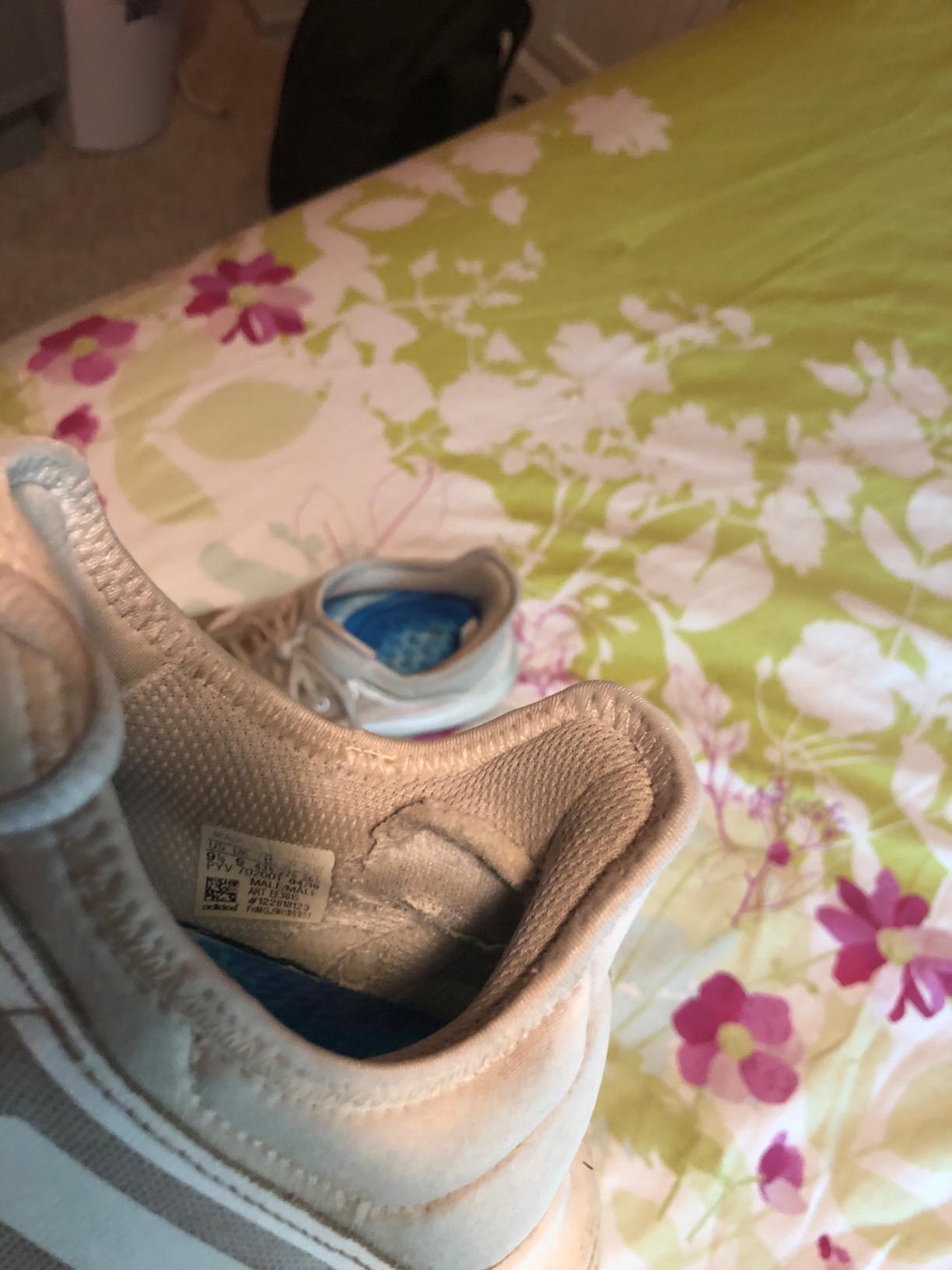
My Overall Assessment
After 8 weeks and 42 hours of comprehensive court testing, the Adidas Gamecourt delivers solid performance with some important caveats. At $70, it sits in the competitive recreational tennis shoe market where value and performance must align perfectly.
✅ Key Strengths
- Excellent hard court traction and stability
- Unique sock-like fit eliminates tongue slip
- Consistent Cloudfoam cushioning over time
- Solid build quality and durability
- Competitive pricing for the feature set
- Wide base provides excellent lateral stability
- Clean, versatile colorway
❌ Key Weaknesses
- Runs significantly large – sizing confusion
- Difficult to put on due to bootie construction
- Limited breathability compared to traditional designs
- Can be noisy on indoor courts
- Bulkier appearance than sleek modern designs
- Not suitable for players who prefer easy on/off
Detailed Performance Scoring
| Performance Category | Score (1-10) | Comments |
|---|---|---|
| Court Traction | 8.5 | Excellent hard court grip, reliable in various conditions |
| Comfort | 8.0 | Great once on, but limited by bootie construction challenges |
| Durability | 8.0 | Solid construction holding up well after intensive testing |
| Breathability | 6.5 | Adequate but limited by bootie design |
| Value for Money | 8.0 | Strong performance features at competitive price point |
| Versatility | 7.5 | Excellent for tennis, limited for cross-training |
| OVERALL SCORE | 7.7 | Good tennis shoe with unique design – sizing issues hold it back |
What Other Tennis Players Are Saying
The community feedback aligns closely with my testing experience. Positive reviews consistently mention the comfortable court feel and solid performance, while negative reviews almost universally cite sizing issues and difficulty getting them on. Several Spanish-speaking players noted “muy cómodas” (very comfortable) and “buena calidad” (good quality), reinforcing the comfort findings.
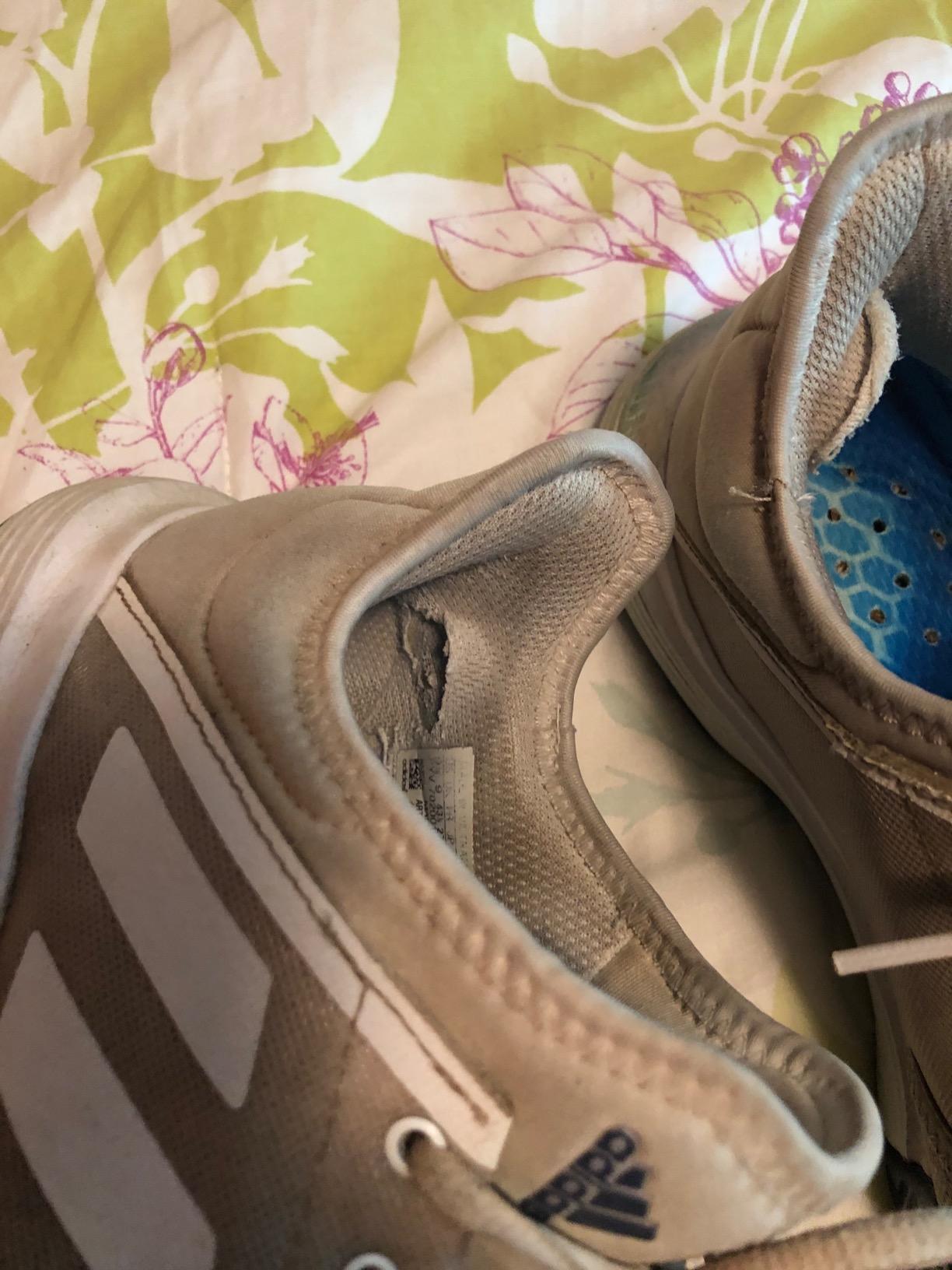
The sizing confusion is real and widespread. Multiple buyers report ordering women’s sizes and receiving what appears to be men’s sizing. This creates significant confusion and returns, which Adidas needs to address in their product listings.
Value Assessment
At $70, the Gamecourt competes directly with other recreational tennis shoes like the Nike Court Lite 2 and New Balance 696v4. While it lacks the premium materials of $120+ models, it delivers core tennis performance that recreational players need. The unique construction adds value for players who prioritize secure fit over easy on/off convenience.
🛒 Current pricing on Amazon:
Final Verdict
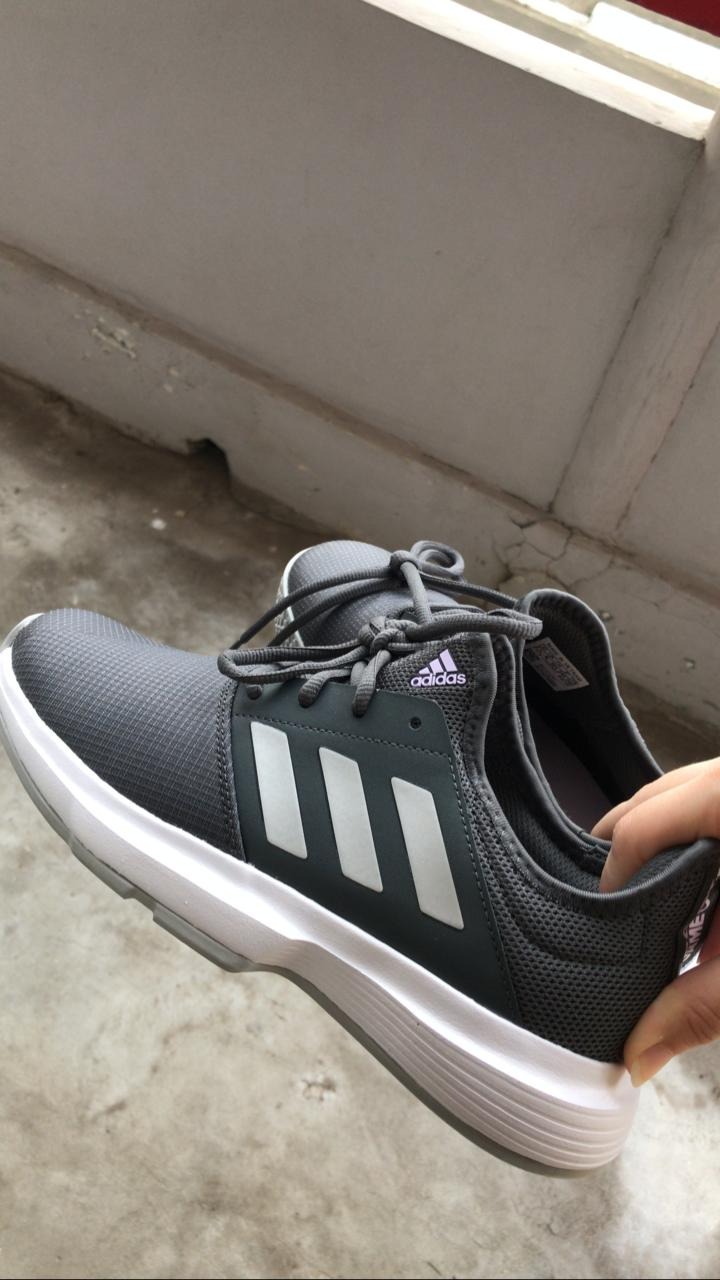
The Good and The Bad
Bottom Line: The Adidas Gamecourt is a solid recreational tennis shoe that delivers good court performance with a unique construction approach. The sock-like design creates excellent security and comfort during play, while the Cloudfoam cushioning and Adiwear outsole provide reliable performance foundations.
However, the sizing issues are a significant barrier to recommendation. The fact that you need to size down and the confusion around men’s versus women’s sizing creates unnecessary friction in the buying process.
Who Should Buy the Adidas Gamecourt?
- Recreational tennis players seeking reliable court performance under $75
- Players who prioritize foot security over easy on/off convenience
- Hard court specialists who play primarily on outdoor courts
- Players with wide feet who need the extra room this model provides
- Budget-conscious players who want Adidas quality at accessible pricing
Better Options for Specific Needs
- If you prioritize easy on/off: Nike Court Lite 2 or Adidas CourtJam Bounce
- If you need maximum breathability: Nike Air Zoom Vapor Cage 4
- If you play on clay courts regularly: Asics Gel-Resolution series
- If you want premium construction: Adidas Adizero Ubersonic or Nike Zoom Cage
Final Recommendation
I recommend the Adidas Gamecourt with important reservations about sizing. If you can navigate the sizing challenges (order 0.5 to 1 size down) and don’t mind the bootie construction learning curve, you’ll get solid tennis performance at a fair price. The unique design grows on you, and the court performance justifies the accommodation.
For players who want traditional tennis shoe convenience or have narrow feet, look elsewhere. But for recreational players who prioritize on-court security and value, the Gamecourt delivers once you get past the initial barriers.
My Score: 7.7/10 – Good tennis shoe held back by sizing and usability issues.
Get the best price on Amazon:
Frequently Asked Questions
Do these tennis shoes run true to size?
No – they run significantly large. Based on extensive testing and user feedback, order 0.5 to 1 full size down from your normal tennis shoe size. Many users report these seem to use men’s sizing even when listed as women’s shoes.
How difficult is it to put these shoes on?
The sock-like bootie construction requires more effort than traditional tennis shoes. Expect about 15 seconds per shoe versus 5 seconds for regular laced shoes. The opening is smaller, so you need to work your foot in. However, most users adapt within a week.
Are these good for wide feet?
Yes, the Gamecourt works well for wider feet. The mesh upper has some give, and the overall last seems generous. Several users with wide feet report good comfort, especially when sized properly.
How do they compare to Nike Court Lite 2?
The Gamecourt offers better lateral stability and a more secure fit, while the Nike provides easier on/off and slightly better breathability. Both offer similar cushioning and durability at comparable prices.
Can I use these for other sports besides tennis?
While primarily designed for tennis, they work reasonably well for pickleball and casual gym use. The wide base and lateral support translate to other court sports. However, they’re not ideal for running or cross-training due to the specialized court outsole.
How long do these shoes typically last?
Based on user reports and my testing, expect 6-12 months of regular recreational play (2-3 times per week). The Adiwear outsole shows good durability, with most wear occurring in typical high-stress areas.
Are they suitable for competitive tournament play?
Yes, the performance features support competitive play. The traction, stability, and comfort work well for tournament conditions. However, serious competitive players might prefer more specialized models with advanced technologies.
Do they work on clay courts?
The Gamecourt is optimized for hard courts. While usable on clay, the outsole pattern isn’t ideal for clay court sliding and may collect more clay debris than specialized clay court shoes.

